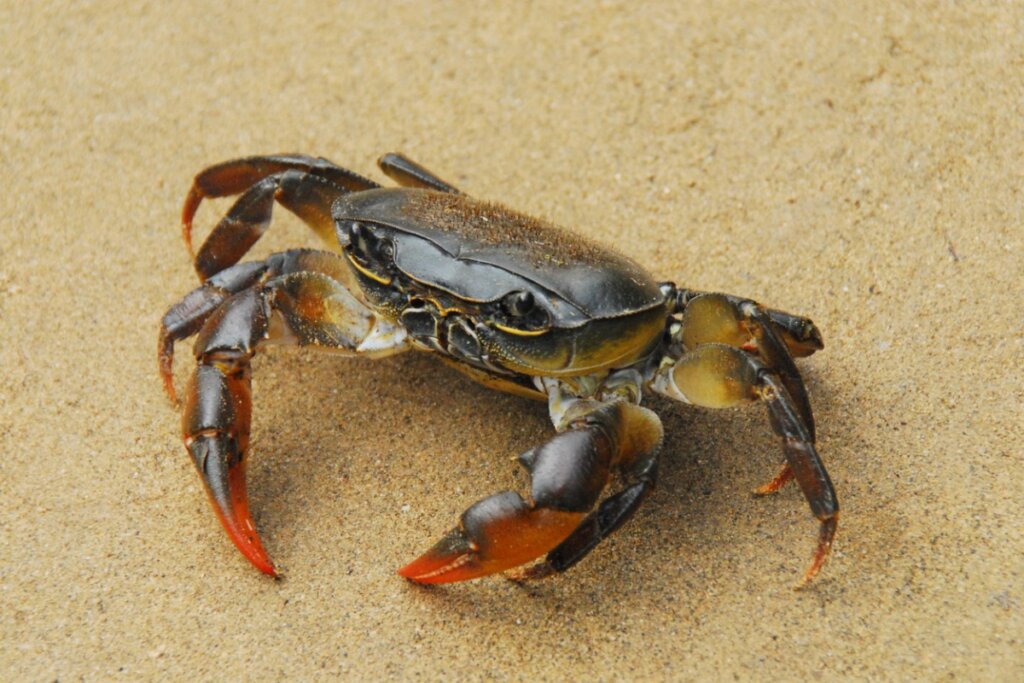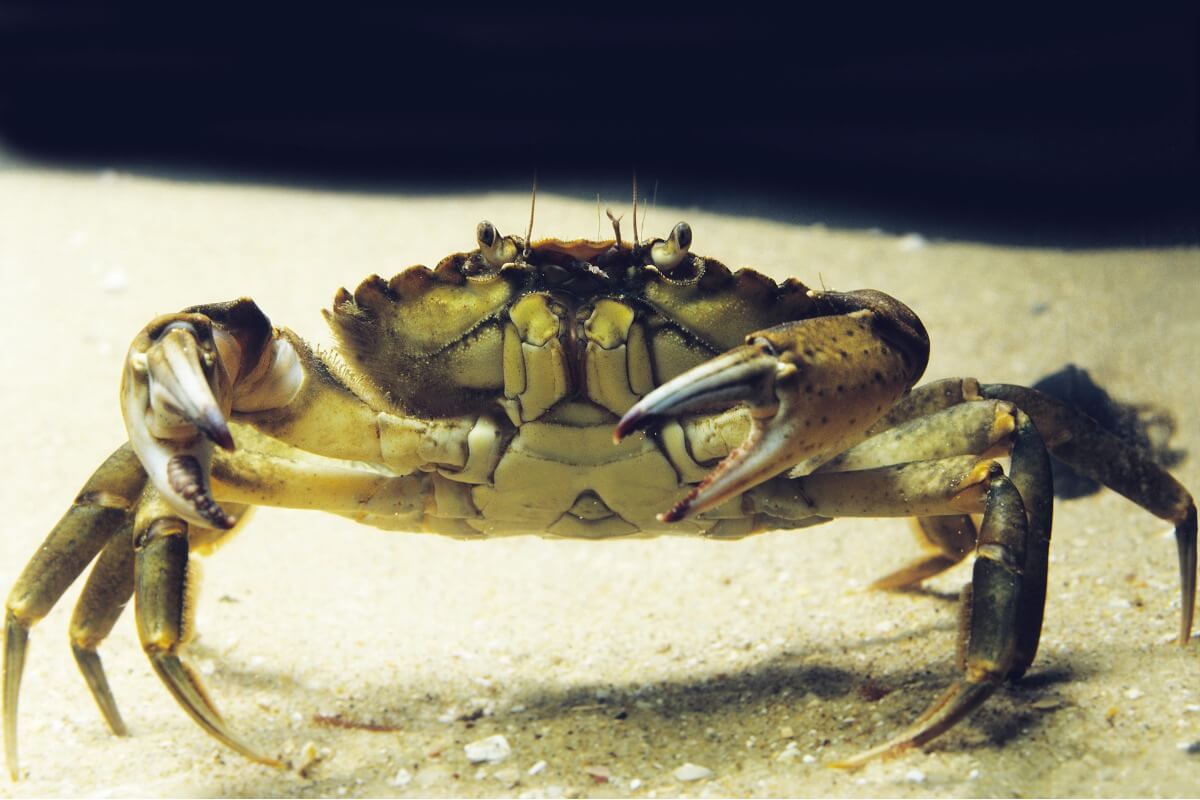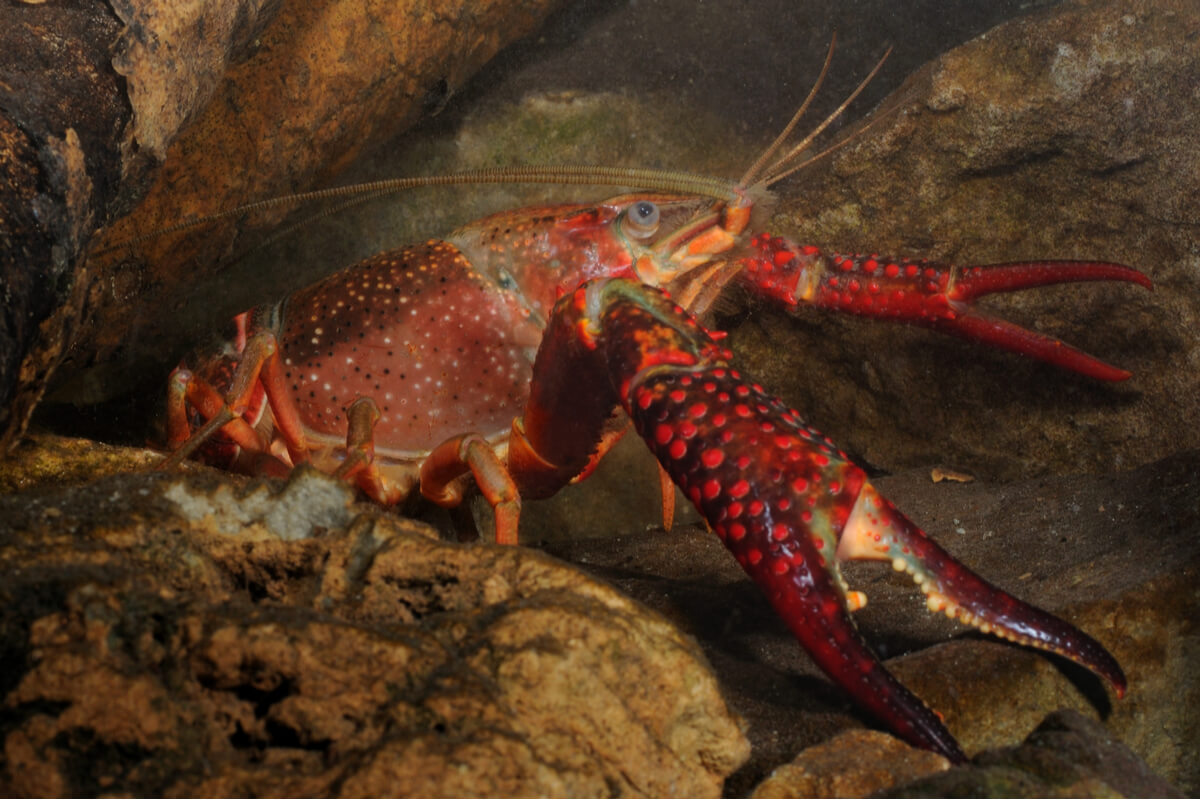What Do Crabs Eat?

There are more than 4000 species of crustaceans belonging to various infraorders of the Pleocyemata suborder. Crabs belong to this suborder, and if you’d like to know what crabs eat, you’d need to travel to the habitat of each and every one of them, as they’re opportunists that take whatever they can get their pincers on.
So, what do crabs eat? Do they feed on animal or vegetable organic matter? In this article, we’ll go into this in more detail, and well as looking at what a crab actually is.
General biology of crabs
Any crustacean belonging to the decapod order is called a crab, a name that indicates that its representatives have 5 pairs of legs. They also have an exoskeleton formed by chitin that protects their body, as they don’t have any bones.
Crabs molt their exoskeleton during the growth stage in order to fit inside it.
In all the species, the first pair of locomotive limbs has evolved into pincers. With them, these crustaceans are able to manipulate food and defend themselves from predators, but they don’t hunt animals in most scenarios.
Another characteristic of crabs is that they’re benthic, which means that they roam the seabed. There are some exceptions, such as certain species of the superfamily Portunoidea, which live by swimming in the deep sea. The coconut tree crab (Birgus latro) is one of the few crabs that only come into contact with water when they haven’t reached the adult stage.
Crab feeding
As for what crabs eat, well, they’re pretty opportunistic. This means that they feed on anything they can get their hands on, whether it’s of animal or vegetable origin. Therefore, they’re considered omnivores and scavengers at the same time.
Most of these crustaceans have a preference for animal organic matter over vegetable. This voracity plays a very important role in the maintenance of their environment, as they clean the seabed from the remains of dead animals and even recycle some remnants of human garbage on the coasts and rivers.
What do sea crabs eat?
Sea crabs belong to the infraorder Brachyura. They’re characterized by their flattened body and a more rounded shape than their freshwater counterparts. They inhabit brackish waters on coasts, salt marshes and estuaries, but also in deep water.
What do crabs eat in these habitats? Their diet consists of fish remains, other crustaceans smaller than themselves, turtle hatchlings, algae, plankton, larvae and, in general, any remains of dead animals. Some of the most striking species of this infraorder are well known among the general population. Here are some examples:
- Fiddler crabs (genus Uca): These get their name, because one of the males’ pincers or chelae are much larger than the other. They feed on plankton, algae, larvae and organic debris that they sift from the seabed.
- Ghost crabs (genus Ocypode): Ghost crabs are so named because of their incredible speed when hiding, which exceeds 20 kilometers per hour. They feed on insects that they catch in flight and organic remains that they find on the seabed.
- Red rock crab or zayapa crab (Grapsus grapsus): This is one of the easiest crabs to find on the Pacific coast of South America. It feeds on algae and small animal remains that are washed ashore by the waves.
- Hermit crabs (superfamily Paguroidea): You’re probably familiar with them because they use shells, corals, wood, or stones to take refuge in, as their exoskeleton is decalcified and much softer than normal. Its diet consists of the remains of other crustaceans, worms, and plant remains.

What do crayfish eat?
Known as crayfish, these belong to the superfamilies Astacoidea and Parastacoidea. They can be found in streams where the currents aren’t too fast or strong.
Although they don’t hunt animals either, crayfish occasionally catch live prey such as earthworms , water fleas, small fish, tadpoles, or even reptiles that come close to the water. When animal matter is scarce, they feed on aquatic plants.
If you’re wondering about specific species, here are some typical examples:
- European crayfish (Austropotamobius pallipes.): This crustacean is in danger of extinction (EN), as it has had to compete with the American crayfish (Procambarus clarkii), introduced into its waters as an invasive species. It feeds on any organic matter it finds, as it does not usually hunt.
- American crayfish (Procambarus clarkii): Its natural habitat is the coast of the Gulf of Mexico and Florida. They’re animals that spread over the terrain very efficiently, as they can cross large dry areas if the weather is good. They’re also great opportunists that feed on anything they can get their hands on.
- Blue crayfish (Cherax quadricarinatus): This is a scavenger and detritivore, and it takes advantage of any source of plant or animal food within its reach. They’re crabs with a great capacity for adaptation, as it resists sudden changes in hydrology, temperature, pH, and oxygen. It’s a native species of Australia.

As you can see, knowing what crabs eat is both a simple and complex question. The information is important for the conservation of each species of crustaceans, because, at the same time that they clean their environment, they serve as food for larger predators. When a taxon of these crustaceans is threatened, both the environment and the rest of the animals are affected.
All cited sources were thoroughly reviewed by our team to ensure their quality, reliability, currency, and validity. The bibliography of this article was considered reliable and of academic or scientific accuracy.
- Füreder, L., Gherardi, F., Holdich, D., Reynolds, J., Sibley, P. & Souty-Grosset, C. 2010. Austropotamobius pallipes. The IUCN Red List of Threatened Species 2010: e.T2430A9438817. https://dx.doi.org/10.2305/IUCN.UK.2010-3.RLTS.T2430A9438817.en. Accessed on 14 December 2021.
- Martínez Campos, B., Hernando Campos, N., & Bermúdez Tobón, A. (2012). Distribución de cangrejos ermitaños (Anomura: Paguroidea) en el mar Caribe colombiano. Revista de Biología Tropical, 60(1), 233-252.
- Campos, M. R. (1989). Análisis de características morfométricas en cangrejos (Crustacea: Decapoda: Pseudothelphusidae) usando métodos multivariados. Caldasia, 87-92.
- Manjarrez, C. D. L. C., & Vázquez-López, H. (2015). Aspectos etológicos del cangrejo violinista Uca Latimanus Rathbun, 1893 en el estero El Salado, Puerto Vallarta, Jalisco, México. Biocyt: Biología, Ciencia y Tecnología, 8(29), 557-569.